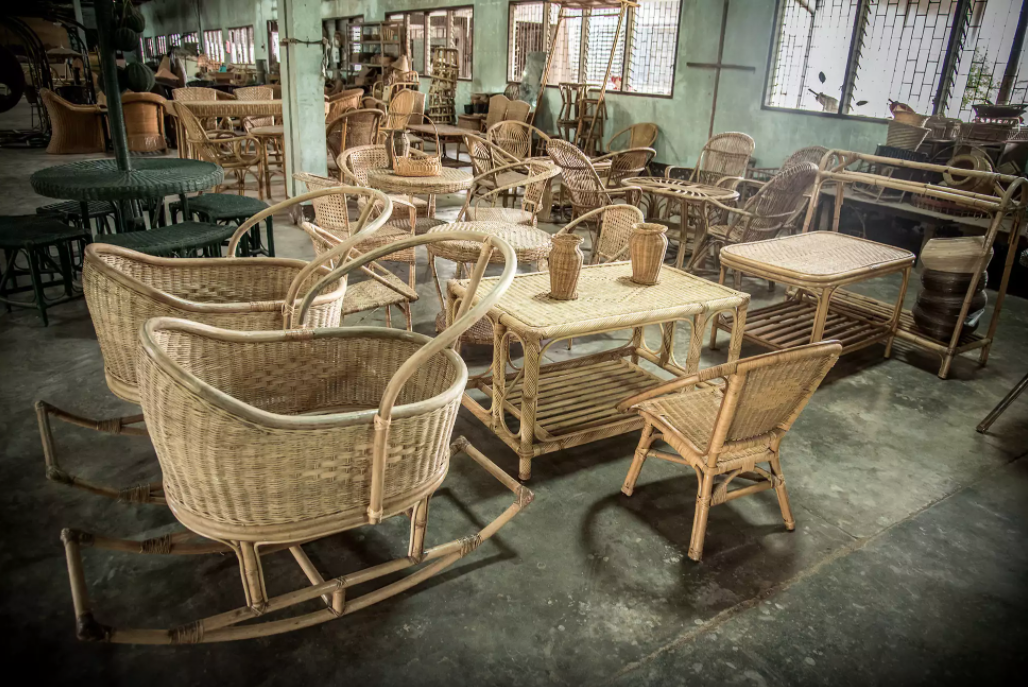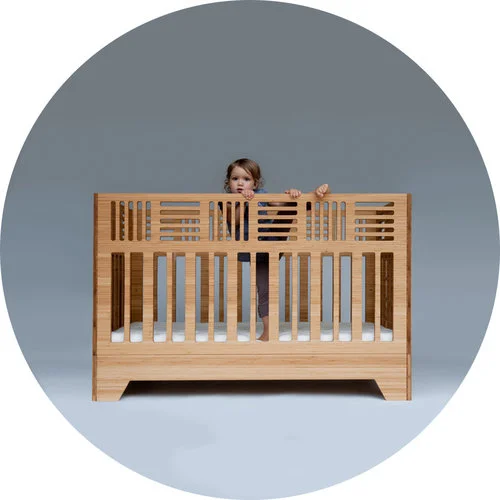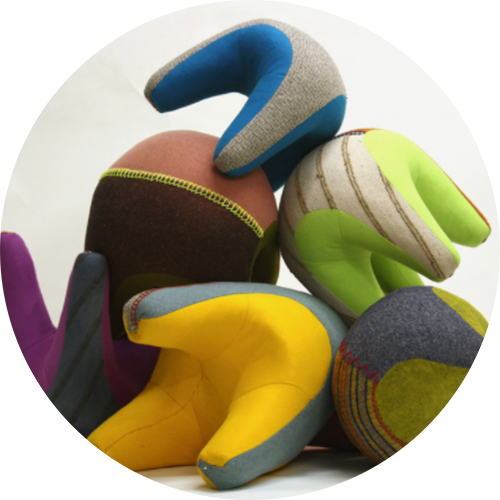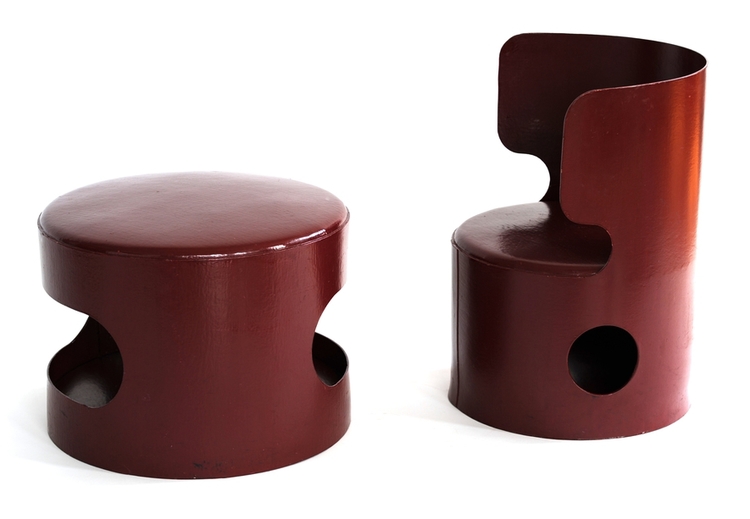002. MATERIALITY
rattan
Written by Frances Vigna
In today’s globalized economy, conscientious parents are faced with an ever-growing list of characteristics that determine a product’s worth. It must be physically safe (with rounded corners and soft materials), and hygienic for young, underdeveloped immune systems. It should be easy to clean, with wipe-down or launderable surfaces. The product should be affordable. And for some parents, a product’s value is also affected by its impact on society during its production and after its disposal. While many designers look to new materials to meet social and ecological expectations, others see the potential in streamlining the development and manufacture of ages-old materials. For thousands of years, craftspeople have used a woody vine found primarily in Southeast Asia to construct lightweight and durable furniture; today, manufacturers are discovering rattan’s potential to fill a gap in viable eco-friendly furniture design for children.
For more than a decade, the World Wildlife Fund has worked with IKEA to establish and maintain responsible forest management in the Greater Mekong region. Their activities have included securing credible forest certification in Laos, Cambodia, and Vietnam, and promoting a sustainable rattan industry in the region. In hopes of conserving the area’s natural forests, the WWF is working with local communities and governments to train harvesters in rattan-supply management and safe processing methods, as well as securing business in international furniture and handicrafts markets, especially in Europe and the United States. According to a report published by the organization at the beginning of 2017, the Laotian province of Bolikhamxay earned the first certification by the Forest Stewardship Council of a natural rattan forest covering more than one thousand hectares in 2011.
Rattan refers to any of six hundred species of naturally renewable woody climbing palm vines that grow throughout Africa and Asia and have been harvested for furniture, handicrafts, and building materials since at least the ancient Egyptian period. The vine is composed of an outer cane and a tough inner core, both of which are traditionally woven into wicker. Rattan is valued for its flexibility when soaked for weaving, and for its overall strength after drying as compared to other natural fibers, such as reed and raffia. During the rise of trade routes and imperial colonies in Asia, rattan arrived in Europe and quickly became popular for its perceived cleanness. In seventeenth-century Holland, rattan wicker was the material of choice for nurseries. Bassinets and cribs were woven from rattan rather than constructed from upholstered wood, which could trap dust and pests and was considered unhygienic.
By the time rattan wicker reached the United States two centuries later, furniture companies had created more efficient machinery for mass-producing certain styles, making them more affordable for growing families. Cyrus Wakefield of Massachusetts perfected equipment for weaving chair seats, and utilized waste materials from splitting rattan in floor coverings and fabrics. The Wakefield Rattan Company, founded in 1851, and which later became the Heywood-Wakefield Company, was the premier source for wicker furniture and baby carriages.
Contemporary designers and manufacturers are revisiting rattan as a sustainable natural material when creating furniture for use by children. Compared to solid wood, rattan wicker is lightweight, which cuts down on material waste and transportation costs during production and shipping and makes furniture made of it easier to move around in the home, even for small children. Rattan furniture is especially desirable in warmer, wetter climates, as the fiber does not warp or break in humidity and the woven construction promotes airflow, allowing cribs and other furniture to stay cool and dry.
For Amber Clohesy of Melbourne, Australia, rattan was a logical choice when she was picking construction materials for infants and children. Her company, Down to the Woods, specializes in design informed by traditional motifs and techniques for the modern consumer. The Wee Poppet bassinet, for example, integrates midcentury French design trends with the earthiness of rattan, says Clohesy. “The ability to create such a broad range of products out of an all-natural and sustainable material is very appealing,” she says. “There is such a large scope to explore contemporary design using traditional materials.”
Many parents now see themselves as living in a global family, and as such, they must take care of not only their own children but the children of others. By making more thoughtful decisions for their homes, parents can hope that their purchases will positively impact each individual in the manufacturer’s supply chain as well as the surrounding environment. According to Clohesy, “Rattan is often produced in countries where the manufacturing is on a small scale coming out of family-based businesses, and the craftspeople’s skills have been handed down generations. Keeping these skills alive is as important as the environmental friendliness of rattan itself.”
The WWF’s sustainable-rattan project eases pressure on the forests of the Greater Mekong while providing its people with a secure source of income from non-timber forest products. Around 80 percent of people in the region rely on agriculture as their primary source of income, and the rattan supply chain has brought in more than US$4 billion, which has considerably increased the quality of life there. A local adviser who works closely with village handicraft groups told the WWF that, among other benefits, many villagers are now able to guarantee higher levels of education for their children. Naturally renewable rattan vines check all the boxes for a conscientious consumer, and with recent efforts by the WWF to reduce deforestation in rattan’s growing regions, the woody vine is proving to be a sustainable construction material for children’s furniture.
Sustainable products are demanded by families who care not only about their own children’s health and well-being but also about maintaining an environment that can nurture children around the world for generations. Furniture designers and manufacturers are doing their part to source environmentally and socially ethical materials such as rattan when creating new pieces for growing children. And recent efforts by the WWF and IKEA to certify and maintain renewable non-timber forests in Southeast Asia are a strong reminder that in order to create truly impactful change in the design industry, developments must be made along each step in the supply chain.















